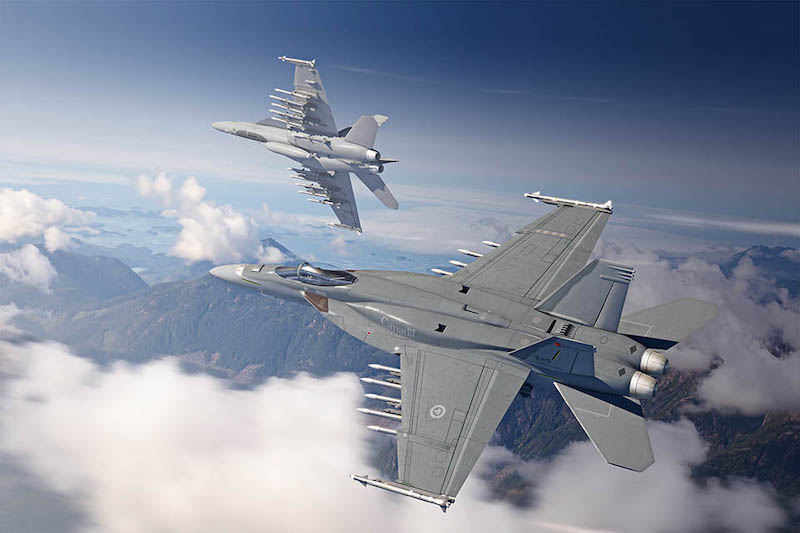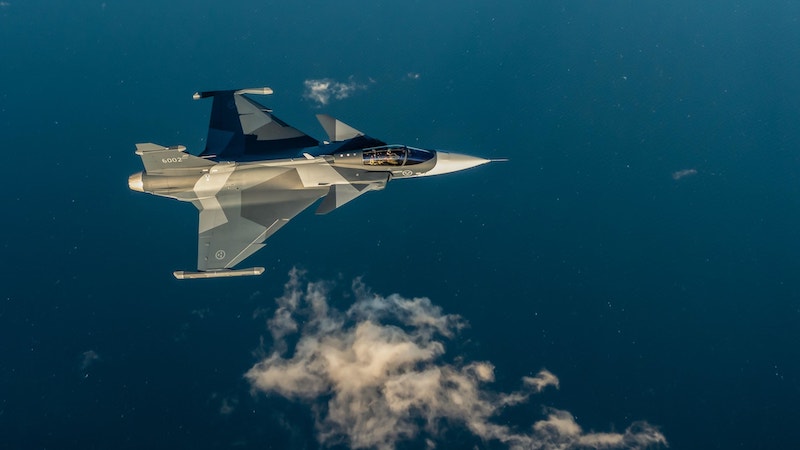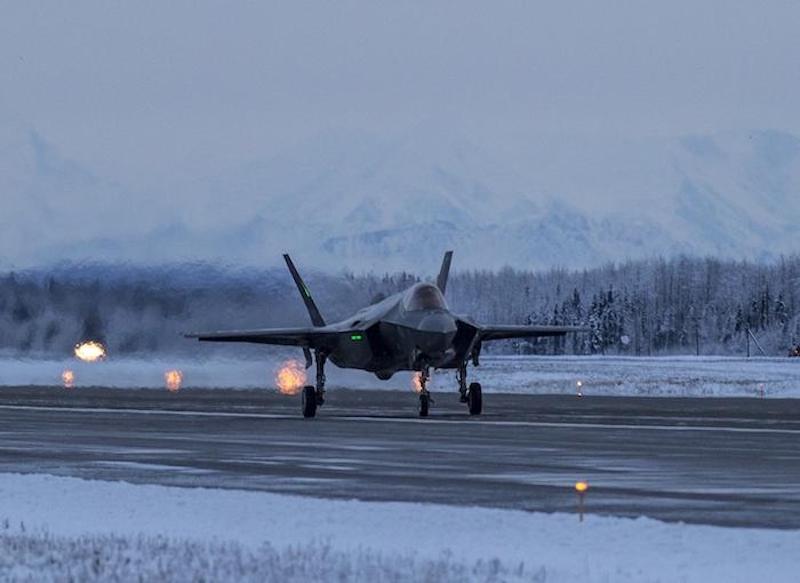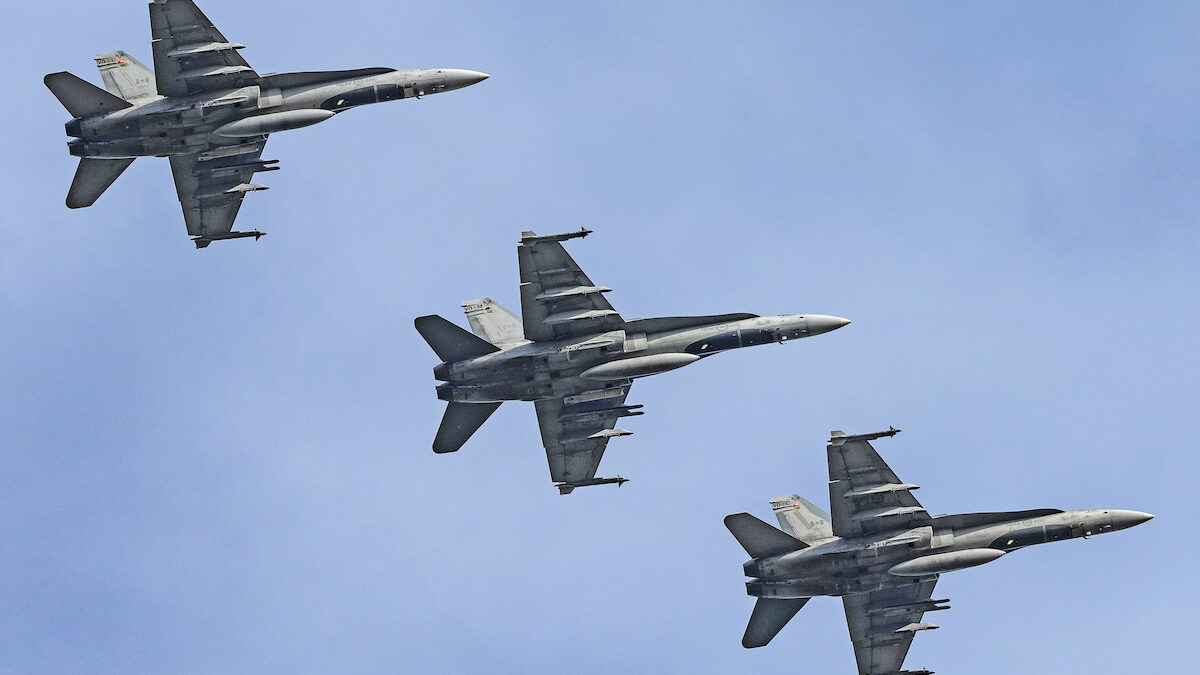When probing for what might explain today’s success, yesterday’s innovations often prove to be key. Some degree of foresight, perhaps, and a strategy of a sort are undoubtedly worthy of credit, too. The context that brought about the end to the Cold War is a case in point. Certainly, many understand during the Cold War one side was better at something, than the other appeared to be. Those who believe so, often invoke innovation as the source of advantage. But our history pursuing innovations provides mixed messages suggesting quite often we don’t fully understand what we mean by innovation. A lack of foresight and an ineffective strategy certainly won’t help either.
Two Components of Innovation
In the August/September 2020 issue of Vanguard, Ralph Kachur seems to ascribe to innovation failures a lack of understanding of or appreciation for the innovation’s “benefit to Canada.” He is right to link economic circumstances and outcomes to the meaning of innovation. In their introduction to Research on the Management of Innovation: The Minnesota Studies (2000) Andrew H. Van de Ven and Harold L. Angle explain, “innovation requires more than the creative capacities to invent new ideas; it requires managerial skills and talents to transform good ideas into practice.” It is these managerial skills, across all of the relevant sectors, that require more attention, for there are two components rooted in the concept of innovation; most of us are content to settle only on the first.
We understand that which is innovative is new and may include a not so novel idea we decide to apply differently. Convincing others to buy into the new idea, or the different way leads to diffusion of the innovation. Therein lies the second component – implementation. It is in the implementation that potential innovations tend to meet up with barriers, some fatal. We find support for this two-tiered conceptualization of innovation from Jon Guttman and his 2014 monogram titled, Fighter Aircraft Combat Debuts, 1915-1945: Innovation in Air Warfare before the Jet Age. Guttman explains innovation in terms of the technical enhancements that are made, but also emphasizes how the political status and circumstances defining the primary conflicts of the era led to improvements in aircraft design. This approach to innovation may be helpful, as we prepare to confront the selection of Canada’s next fighter. Ironically, the sense of being locked into that label itself feels like a barrier to implementation and a potential failure to innovate.
Impeding Innovation
In Lawrence Freedman’s The Revolution in Military Affairs (1998), the author reveals what lies beyond Kachur’s economic reference point, hinting at some of the things that impede innovation. The Cold War had ended, budget cuts ensued, and a quest for innovative ways and means began in earnest. An “opportunity to think about the shape of armed forces over the longer-term presented,” Freedman wrote, “but a radical restructuring process did not arise. Distinctive services remained beholden to their functional environments, and equipment improvements were conservative, and did not exhibit any ‘complete break from the past.’” To summarize, it seems possible the victory that was the Cold War delivered some creativity but also complacency from conquest; the kinds of things that impede innovation grew ever more institutionalized.
Understanding Innovation
Large-scale aircraft procurements have tended to unfold in conservative risk-averse ways. The evolution of aircraft has tended to follow a path of logical incrementalism, rather than the radical innovation path. Analysis of the three contenders vying to replace Canada’s CF-188 Hornet is an opportunity to hone our understanding of innovation, to appreciate all of the factors and barriers arising. Alas, the process is understandably mired in challenges that can expose our short-sightedness. Innovation should encourage us to look beyond functionalism and, in this case, consider more widely how and to what extent the successor to our current Hornet and the organizations that will employ it, can respond to emergent security developments. Guttman referred to “political status and circumstances,” and that points toward the need for some foresight and alignment with our national strategy.
In Winning the Next War: Innovation and the Modern Military, author Stephen Rosen (1991) argues that “understanding the process of innovation, rather than any particular change to weapons (things), organizations (people) or tactics (ideas), will be key to winning future wars.” In the present context, this would seem to encourage us to focus beyond claims to deploy effectively any late 4th or emerging 5th generation technologies, like stealth or active-electronic-array radar devices. Instead, the process of innovation emphasizes also the platform’s adaptation to an evolving external environment, and the relative ease with which it can be continuously re-integrated by the air force organization the restructuring of which should be anticipated in response to an ever-evolving security environment. Those familiar with the concept of strategy will probably recognize these subtle references to the essential elements of external adaptation and internal integration.

To illustrate, the emergence of the combustion engine, mobile radios, and the airplane in combination Rosen describes, “as a significant revolution in military affairs of the 1920s and 1930s, that contributed to the development of naval aviation.” It would be regrettably inaccurate to simplify all of that as “the advent of the carrier” since doing so could mean we overlook either how society responded to these developments or what society may have been telling us as regards what it needed. Another revolution followed in the 1950s, “when ballistic missiles and nuclear weapons together offered unprecedented means of inflicting immense firepower on the enemy,” which contributed to the need for helicopters and airmobile battlefield concepts, but also played a significant part in the development of the nuclear submarine simply because maritime forces feared obsolescence in the face of an expanding strategic missile and bombing capability.
If we were to leverage all that, in terms of the advent of the armed helicopter, or the fielding of a nuclear-missile-carrying underwater craft, we risk losing sight of the impact on land forces, too, manifest in the creation of pentomic divisions, and other similar restructuring initiatives in the other services. A third revolution “took root in the 1980s, when electronics, combined with sensors, computers, and communications systems heralded unfounded levels of intelligence collection, which today we label the C4ISR revolution.” It may now be clearer to the reader that the fusion of sensors on the Gripen, Super Hornet, and Lightning II isn’t really the be-all and end-all of the innovation process on which we should be focusing. At least, this is the cautionary message Rosen, Freedman, and Guttman would seem to prefer we heed.
Be More Innovative?
Rosen, like Machiavelli, emphasizes that “all social innovation is difficult,” explaining as with political and military innovation the issue is one of a problem of bureaucracy, which is all the more encompassing. In the affected bureaucracy are untold numbers of camps or tribes invested in one or more aspects of the legacy technology or capability in question. Quite often, some may be so invested their very identity is rooted therein. These are the ones who prove the most inflexible, or the least adaptive. Some conservatism or aversion to risk is understandable, but intransigence can be debilitating. In the present context, we need to ask about the value of holding fast to the perceived multi-engine need, or the adherence to the industrial benefits offsetting model from the 1980s. The pace of change, today, signals the requirement for a broader understanding of the emerging environment, from many viewpoints, not just these singular technological or economic ones that would seem to suggest a much shallower analysis of innovation. Marketplace dynamics alone surely must mean the needs of the 1980s were much different than those of today. Is it right to apply the same IRB model to current circumstances, or should we not be more innovative?
The Hornet was built more than 40 years ago and was slated for replacement nearly 15 years ago. Incremental capability adjustments have added to the aircraft’s utility, but this scale of change is anticipated to be managed within the status quo defined by the current organizational, technological, socio-cultural, and politico-military-economic paradigms, in a manner seemingly oblivious to evolutionary and sometimes revolutionary forces that can emerge.

Life-extension decisions, while important, might only add to the tension and dissonance arising when the acquisition of new equipment is more essential. The need for more effective capabilities deemed essential for operating under new and evolving circumstances goes ignored when logical incrementalism, not radical innovation wins the day. Choosing between the Gripen, the Super Hornet, or the Lightning II is about opting for a potential innovation, the measurement or limits of which involves determining just how resilient, adaptive, and forward leaning each may be. We need to understand better where each might be on the innovation spectrum unique to our circumstances.
Evaluating the Three Contenders
What I am proposing, of course, is not easy. Were it more so, our collective understanding of the process of innovation would lead much more readily to effective decisions. Each of the three contenders deserves to be evaluated to determine 1) from a political perspective, the extent of the contribution each can make to protecting Canadians and our specific interests over at least the next 40 years, given the precedent we have set with the CF-188 since 1982; 2) from an economic perspective, the impact of acquiring each of them will have on the domestic and international fighter aircraft industry going forward; 3) from a socio-cultural perspective, the extent to which each can help shape not just the air force but the armed forces of tomorrow in terms of how each option can engender an interest in military service, especially in the air force.
A March 30, 2012 article by Paul Koring published in the Globe and Mail argued in support of the status quo employing an extremely shallow and unhelpful approach to the analysis of the government’s preference for the F-35. Had we applied his very narrow-minded logic in 1982, 40 years later we would have little to no experience with precision munitions, would most probably have been unable to participate effectively in the Gulf War (1990), and the Libya Campaign (2011), simply because the continued use of the 1950s and 1960s technology would have placed our air force personnel at tremendous risk. More recently, our CF-18-enabled “presence” in eastern Europe has indeed served to discourage an increasingly provocative if not menacing Russia. Thankfully, some foresight and much diverse analysis contributed to a decision to prepare Canada for continuing collaborative contributions made possible by the late 1970s decision to select the McDonnell-Douglas F-18.
Political, Economic and Socio-cultural Perspectives
From a political perspective, Canada’s ability to thrive in the global marketplace, to exploit our own natural resources everywhere, and to defend same, without undue risk to Canadians remains understandably paramount. The menace that is Russia just happens to be not just on our border, but also seems to be very interested in expanding their own presence in the Arctic, if not elsewhere. It seems with each passing week, yet another provocation is inflicted on one or more of our allies while operating over international territory.
There are others, too, whose interests do not align with our own, and whose activities elsewhere are increasingly just as provocative as our traditional foe. It would seem there will be occasions going forward that call for our support of allied efforts to contain some of this aggression, and our ability to do so first without revealing where we are, and, secondly, seeing targets and firing on them before they see us, would seem to be rather important. These are the kinds of capabilities offered not by all three contenders to the same extent, per se, but certainly better by one over the others, or so it would seem.

From an economic perspective, Canada’s aerospace industry is equally invested in both the Boeing firm and the Lockheed Martin Corporation. Care must be taken when deciding on which of the three fighters to buy. Why? Because it is important to understand the consequences to this component of the aerospace industry of choosing one firm over the others. In terms of strategy, not long ago the corporate world recognized the role played by the firm’s core competencies, to assuring their position in the market. The firm’s competitive advantage, it seems, was in good measure attributable to some key people employed therein, and the skills they brought to the job. Experience of the firm, it turns out, derives from specialization which itself derives from decisions to develop competitive advantage in specific product areas where the firm’s R&D efforts have concentrated.
In The Cutting Edge: A Half-Century of U.S. Fighter Aircraft R&D, (1998) authors Mark Lorell and Hugh Levaux explain of the 14 fighter aircraft firms in place at the end of the Second World War only a handful had the system-specific expertise in fighter design to lead in the market place at the time. Lockheed fell off the pace before re-emerging in the 1970s owing to firm-specific knowledge. It is this interplay between system-specific and firm-specific knowledge that makes or breaks a company, during long periods without much R&D. Once the decision is made, with only Boeing and Lockheed Martin really in the North American marketplace offering competition in the fighter aircraft sphere, one is expected to drop off, leaving only one in place. When options decline and competition withers, innovation suffers.
From a socio-cultural perspective, what capabilities may be offered by the new fighter, in terms of resilience, adaptability, and flexibility, may matter a great deal. Analysis of the three contenders should include consideration of society today. What is it about the younger generations, their interests, their motivations, and their skills that, when connected to the option selected, will prove beneficial to the country’s own security and defence interests and needs? Recently retired Lockheed Martin test pilot Billie Flynn refers to the Lightning II “for all you gamers and techies [as] the best game on the planet!” He refers to the F-35s supercockpit-like displays, coupled with a “Tony-Stark”-like helmet (from “Iron Man”) together presenting real-time information fused from multiple and various sensors some native to your own aircraft and others from both within your formation and outside thereof. Contending aircraft are themselves investing in comparable technologies. For example, the Gripen “NG” (next generation) like the Super Hornet will feature an Active Electronically-scanned Array (AESA) radar, but the incorporation of other sensors like infra-red, seem currently limited to the F-35 Lightning II.
A Fighter, Bomber and an ISR Platform
The inherent potential of an aircraft to serve as a fighter, a bomber, and an information-surveillance-reconnaissance (ISR) platform raises interesting questions about future force structure and individual training. The impact of such technology on the foot-soldier is documented in stories about the “strategic corporal” in Afghanistan, in the months following the 9/11 attacks in North America. Conceivably, individuals operating such-equipped fighter aircraft, along with those operating participating and partnering remotely-piloted vehicles will be very effective if they are given the latitude to act accordingly. It seems, though, that we simply should not ignore the fact we are faced with an option very reminiscent of deliberations over aircraft development faced by leaders in the opening months of the First World War.
If we leverage Jon Guttman’s “political status and circumstances” methodology, it is difficult to ignore the attributes of what author Klaus Schwab labels the “fourth revolution.” In The Fourth Industrial Revolution, Schwab, too, says we have yet to grasp fully the circumstances that today demand innovation. A number of technologies are “creating an inflection point in our human experience,” says Schwab, suggesting they deserve to be considered in the context of large-scale decisions like the one facing Canada. Artificial intelligence; robotics; the internet of things; autonomous vehicles; nanotechnology; and quantum computing should not be excluded from foresight projections that should form part of the evaluation.
Now is the time to think about the meaning and potential impact of such things on our collective future. As John Arquilla and David Ronfeldt show, in their book In Athena’s Camp: Preparing for Conflict in the Information Age (1997), “the information age is facilitating two major organizational trends; one is the rising power of small groups, the other is the rise of network forms of organization.” These trends seem to be accelerating, in response to the circumstances of the emerging security and defence environment. The capabilities offered by each of the contenders for Canada’s next fighter aircraft procurement to varying degrees and in different ways, offer us the potential for success. Not all of them can claim yet to be innovations. That depends a lot on the foresight, strategy crafting, and environmental analysis we choose to put into the decision-making this time around. Ian MacMillan, a PhD student in strategic studies with the University of Calgary wrote of the (Joint Strike Fighter) F-35 program in 2017, “…many close to the [project] agree that something special will emerge.” I agree, wholeheartedly; the marshaling of system-specific and firm-specific competencies from the three firms competing for the contract has led to the threshold of what may be a new era in combat in the 3rd dimension. What I have attempted to do here is show the extent to which MacMillan is correct depends to a large extent on the quality of analysis Canada’s leaders apply to the procurement decision now facing the evaluation of the three contenders.

